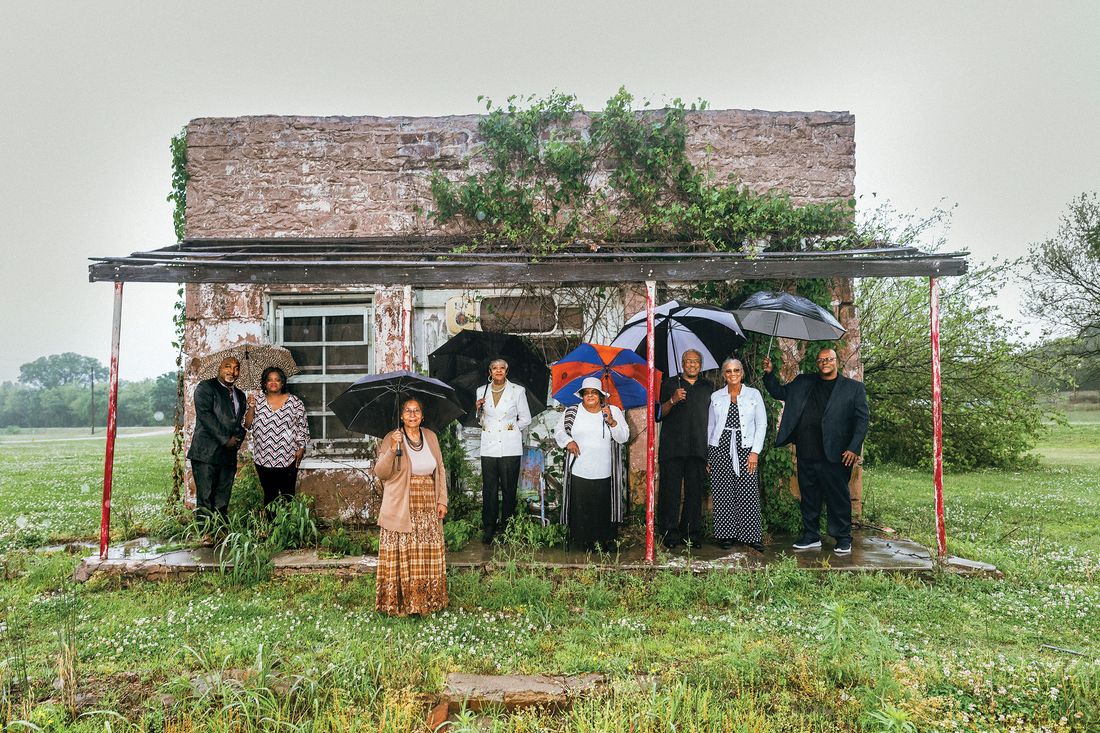
In 1984, Dr. Francis Shelton moved back to Boley, the Oklahoma town where she grew up. She had gotten her degree in another town and worked for years as a biochemist in Oklahoma City; upon returning to Boley, she noticed how many buildings had fallen into disrepair, how commerce had declined. “Our elders were so interested in training us on how to make a living that they didn’t teach us how to make that living here,” says Shelton. She decided to purchase the hardware store, both for the business and to preserve its history: The original owner, T.B. Armstrong, had helped found Boley in 1903 and served as its first mayor, a post Shelton would take up in 2015.
Boley is one of Oklahoma’s 13 remaining all-Black towns. Founded in Indian Territory after the Civil War, these 50-plus settlements attracted Black Americans from throughout the South, offering them the chance to build communities safe from racist violence. It was this same desire for self-determination that birthed the Greenwood district of Tulsa, 50 miles from Boley. By 1921, Greenwood’s segregated Black community had built a robust economy, which was destroyed on Memorial Day Weekend when white residents — many of whom had been deputized by city officials — torched and bombed it to the ground. “When people fled Greenwood, they came to the Black towns,” says local historian Shirley Nero.
In the ensuing decades, most of these towns would disappear. Today, the survivors are quiet communities: a few hundred residents each, spread out on large plots of land. Last summer, as George Floyd’s murder forced the nation to contend with its racist roots, these towns felt only the smallest of ripples. “We have a bit of insulation from the problems of the outside world,” says Mayor Gregory Smith of Summit.
But exactly 100 years after the Tulsa massacre and one year after the murder of George Floyd — two acts of spectacular violence, sanctioned by the state — these mayors face a slower kind of violence in the form of governmental neglect and economic isolation. In recent years, all of Tullahassee, the oldest surviving Black town in Oklahoma, was at risk of losing its water services because of an overdue bill. Because these towns lack a strong tax base, many rely on grants and grassroots funding to cover basic infrastructural needs. In Tatums, the roads have been torn up by oil-company trucks. “They’re coming through here, taking all the oil and gas,” says Mayor Ella DeShazer, who is fighting to get the companies to repair the roads. “This little Black town is where they’re getting their riches.” And as young people continue to leave in search of jobs, the mayors are tasked with protecting these communities from being forgotten. “Other people need to know that we didn’t just materialize,” says Shelton. “We came from a place that was important and survived.”
































